Sony FE 70-200 mm f/4 Macro G OSS II
3. Build quality and image stabilization
The new Sony lens is physically lighter and smaller than its predecessor but still it remains bigger and heavier than the Canon. The Sony sticks out with its excellent minimum focusing distance that makes it possible to get the 1:2 reproduction ratio across the whole focal range. As this telephoto lens is compatible with different teleconverters, you can also attach it to the TC 2.0x and get the 1:1 macro ratio across the range.
In the following photo the Sony FE 70-200 mm f/4 G OSS II is positioned between the reflex camera Sigma A 35 mm f/1.4 DG HSM and the Voigtlander Apo-Lanthar 2/50.
Please Support UsIf you enjoy our reviews and articles, and you want us to continue our work please, support our website by donating through PayPal. The funds are going to be used for paying our editorial team, renting servers, and equipping our testing studio; only that way we will be able to continue providing you interesting content for free. |
- - - - - - - - - - - - - - - - - - - - - - - - - - - - - - - - - - - - - - - - - - - - - - - -
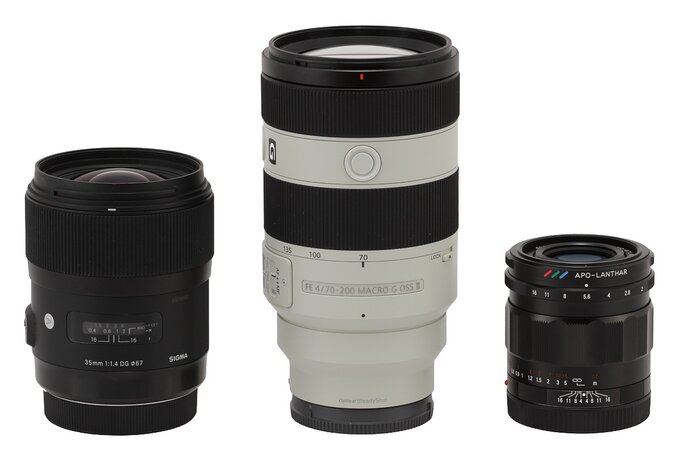 |
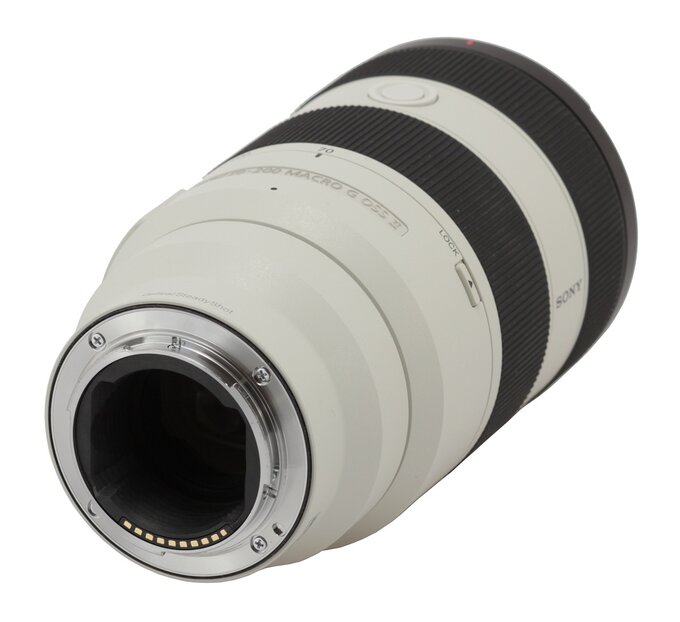 |
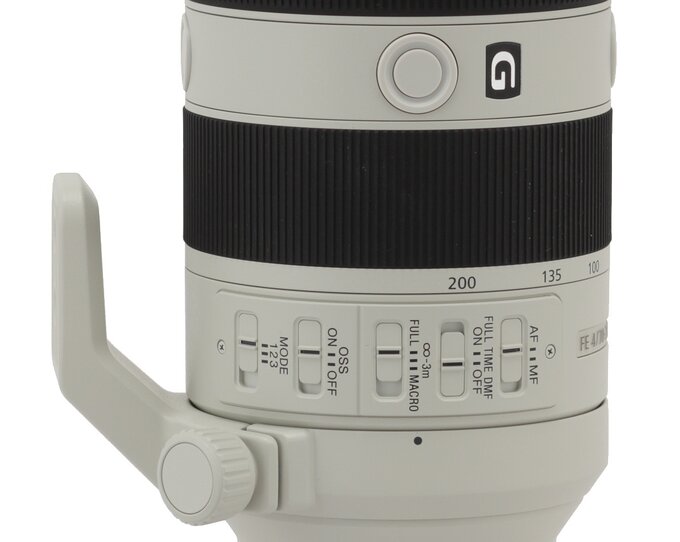 |
Further on you see an immobile ring with an inscription 'FE 4/70-200 MACRO G OSS II'. If you look at it from above, on the right you find the LOCK switch that blocks the focal length change. On the left side of the inscription, mentioned earlier, you see a whole array of switches. The first of them, marked as AF/MF, is used to control the autofocus mechanism mode. The second one, FULL TIME DMF ON/OFF, allows you to switch on or off manual adjusting of focus, available even if you work in the autofocus mode. The third one is an autofocus limiter with three options available, FULL, from 3 meters to infinity, and the MACRO range. The fourth switch, OSS ON/OFF, controls optical image stabilization, and the fifth (MODE 1,2,3) allows you to choose different stabilization working modes.
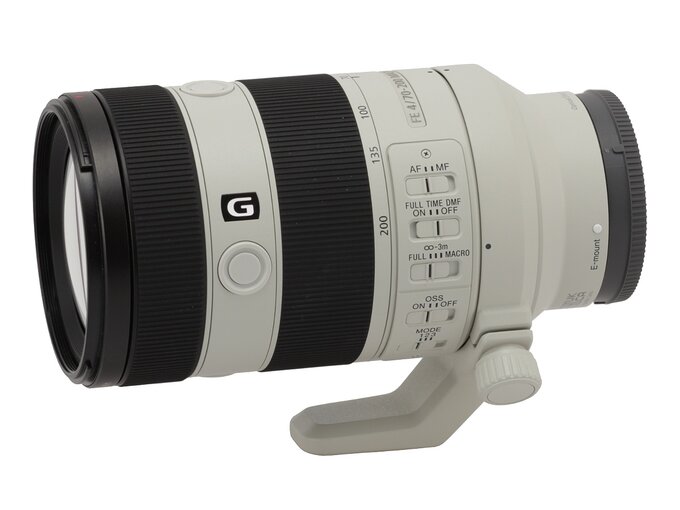 |
After that you see a white, immoblie ring with a black G mark meaning the series of the tested lens, the producer's logo, and three round focus lock buttons.
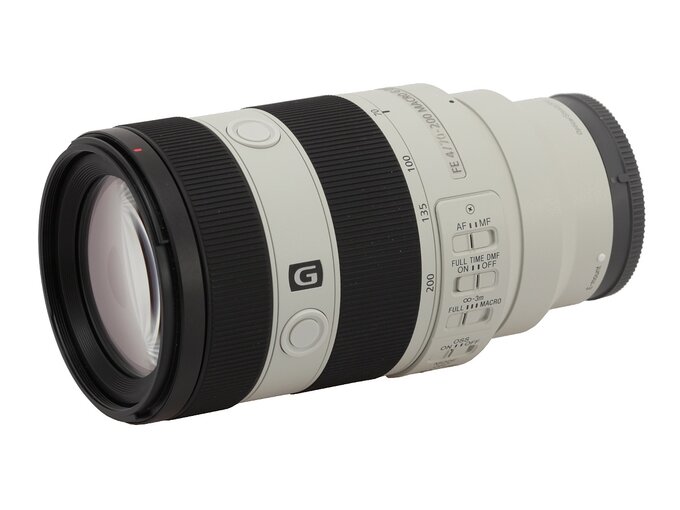 |
A black, metal ring that doesn't move and turns into a hood mount and a non-rotating filter thread, 72 mm in diameter, is the last part of the tested lens. On that ring you can find an inscription informing you about the minimum focusing distance – at 70 mm it amounts to 0.26m/0.86ft and at 200 mm to 0.42m/1.38ft. These are excellent values per se, practically unheard-of in this class of equipment.
The front element is flat, immobile, 56 mm in diameter, very shallowly hidden inside the barrel. When you change the focal length from 70 to 200 mm it extends along the whole optical system on a honogeneous tube, making the whole instrument longer by 56 mm.
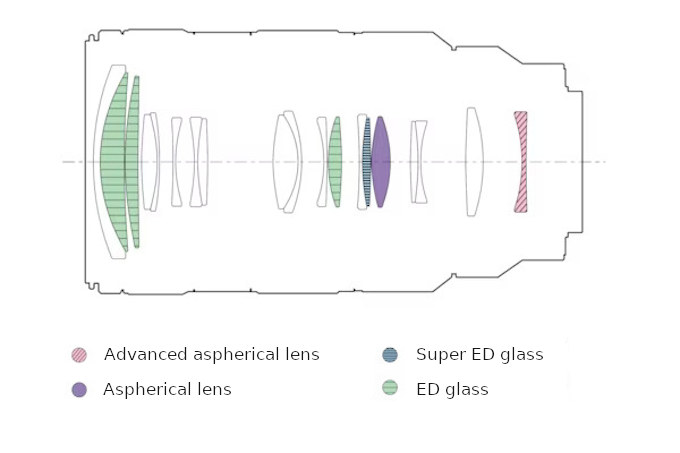 |
New Nano AR Coating II layers are supposed to ensure good performance against bright light and the front element is also covered by special fluorite coating. The instrument is also dust- and splash-resistant.
Buyers get in the box with the lens: both caps, a hood, and a tripod adapter. There is no case added to that.
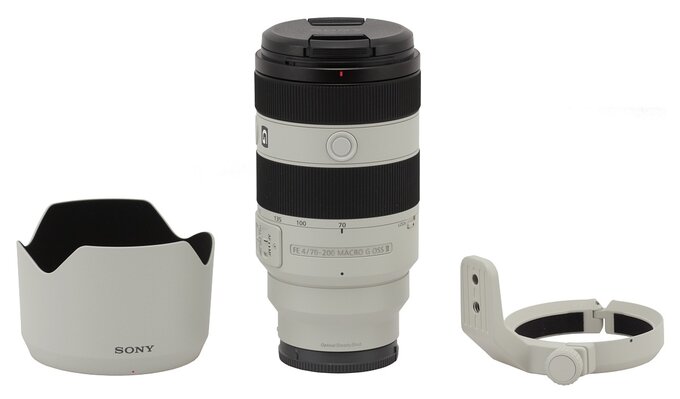 |
Optical stabilization
Producers declare that the Sony 70-200 mm f/4 II is equipped with an image stabilization system as efficient as 4 EV. In order to check that claim we set the lens at 200 mm and took several dozen photos with exposure times ranging from 1/250 to 1/2.5 of a second and the stabilization switched on and off. For every set of photos we determined a percentage of out-of-focus shots; then we presented it in a form of a graph of exposure time which was expressed in EV (with 0 EV being an equivalent of 1/200 of a second).
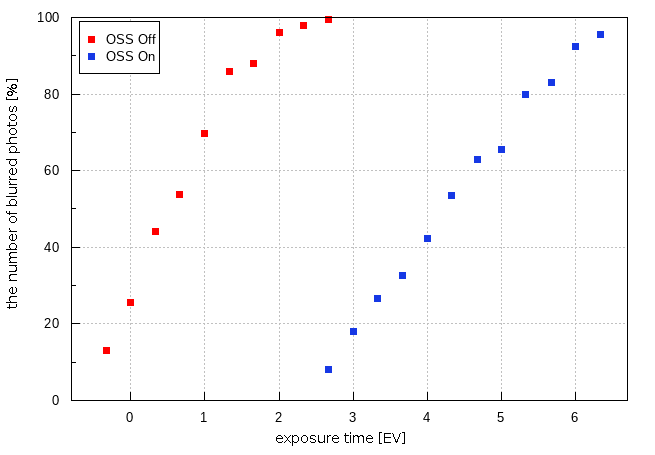
The maximum distance between both curves reaches about 4 EV and such is, in our view, the real efficiency of the stablization mechanism of the tested lens. It is an excellent result, in perfect accordance with official declarations of the producers.






